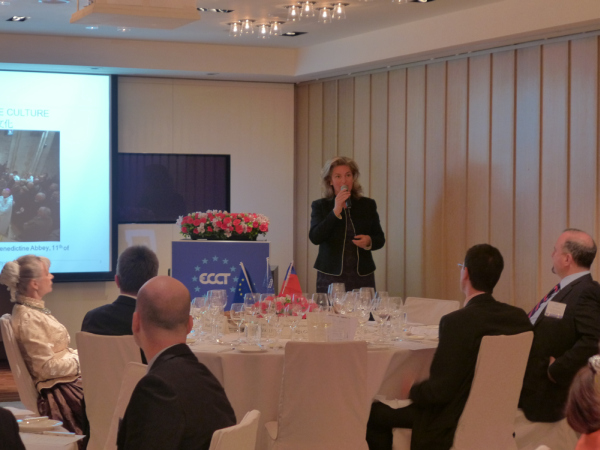Introduction to Hungarian wine culture

During this special event, the guest speaker gave an introduction to the history of Hungarian wine, a description of the main wine regions and wine varieties, while guests sampled some Hungarian wines. This included light white wines, red wine and the famous sweet Tokaj dessert wine.
The event also featured two special performances by Levente Székely, Head of the Hungarian Trade Office in Taiwan and his wife, Hédi Székelyné Sztanó. The first performance was of folk music from Transylvania (a violin solo by Representative Székely). The second was dance music from southwestern Hungary where Ambassador Székely played the violin to accompany his wife's performance of the "wine bottle dance", a dance traditionally performed at the harvest time.
Fossils of grapevine leaves found in the 20th century prove that grapes have grown in Hungary for millennia while winemaking in the region dates back to before the Roman Empire, over 2,000 years ago. The country is home to the world's oldest wine classification system, which dates back to 1772 in Tokaj. Winemaking is so much part of the culture that the Hungarian Catholic church even holds special services on 11 November each year to bless the harvest. Given its unique geology and climate, Hungary is able to satisfy all demands for diversity and variety in terms of wine production. Like France, Hungary is capable of producing a wide variety of high quality white and red wines.
At the beginning of the 20th Century, Hungary was one of the three largest wine-producing countries in Europe, along with France and Germany. The production and quality of Hungarian wine was disrupted during the communist era but since the 1990s, Hungarian winemakers have been able to restore the conditions for quality winemaking and to recover the international reputation of their products. Since the fall of the Berlin Wall in 1989, winemaking techniques and vineyard management have been revolutionized to embrace state-of-the-art 21st Century winemaking techniques. As Hungarian winemakers pay more attention to indigenous varieties and are focusing on expressing the exceptional terroir in their wines, Hungary is thereby reclaiming its glorious vinous past.
